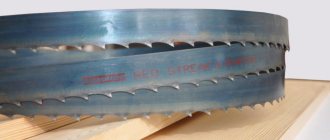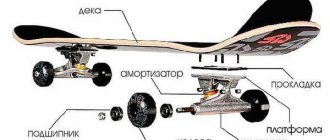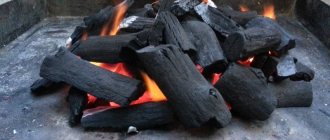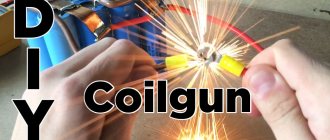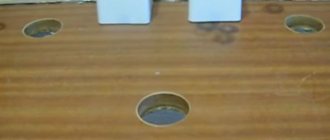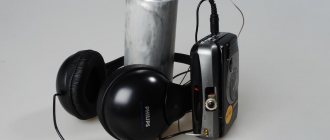The use of gas fuel is ineffective without the use of special burners. Today the market offers a considerable selection of designs, from professional ones that create temperatures of up to 1500 degrees and above, to household devices that are needed for heating and cooking.
Nevertheless, it is common for home craftsmen to make these devices themselves. The reason is simple - a do-it-yourself gas burner, adapted to a specific task and working conditions, is more convenient, even if it costs more than a factory one.
Types and classification
Based on their intended purpose, devices are divided into professional and household.
The first include:
- Burners for work related to metal processing: soldering, forging, welding.
- Devices for general construction, road work, roofing, wood burning, and removal of old paint.
- Technological equipment for various purposes. For example, drying chambers, food industry tools.
For household purposes, this includes a gas stove, nozzles for home stoves, heating boilers, and gas convectors.
Household devices include home workshop devices . This is where you most often find do-it-yourself burners, not only manufactured, but initially designed to perform specific tasks.
They are arranged according to two main schemes:
- injection or injection;
- with complete preliminary mixing of the working mixture, or ejection.
In the first type, air (or oxygen) is captured by the supplied gas stream. In the latter, the gas-air mixture is obtained in a preliminary chamber.
Making a gas burner from scrap materials: step by step
List of materials and tools:
• drill;• grinder;• hammer;• sandpaper;• brass blanks for the divider nozzle;• thin brass tube with a diameter of 15 mm;• wooden blocks;• vice;• silicone seal or FUM tape;• hoses for connection;• valve for adjustment.
How to make a nozzle and handle
First of all, we take a brass tube and attach a handle to it - for example, from an old burner, or from a wooden block, having processed it beforehand. We drill a hole in the block for a brass tube with the appropriate diameter. Having inserted the tube into the timber, we secure it with silicone or epoxy resin.
Next, we proceed to a more labor-intensive and time-consuming stage of work - manufacturing the nozzle. The hole size should preferably be 0.1 mm.
You can use a drill to make a slightly larger hole, and then adjust the edges to 0.1 mm. The hole must have the correct shape so that the flame is even.
After this, we fix the workpiece in a vice, take a hammer and carefully, in a vertical plane with a “pull” towards the middle of the workpiece, strike the future nozzle. We rotate the product evenly to form an ideal hole.
Then we take fine-grit sandpaper and sand the nozzle head. To connect to the tube, a thread is applied to the back of the product; the elements can also be simply soldered - but in the future, repairing the parts will be more difficult.
Now we connect the device to the gas cylinder and set it on fire - the do-it-yourself burner is ready for use. However, here you can see that to regulate the gas flow, you can only open and close the valve of the gas cylinder, and thus it is very difficult to obtain the desired flame. What we can do?
How to improve flame control
For the normal operation of our homemade unit, we will install a divider and a tap on it. It is better to mount the tap near the handle, at a distance of about 2–4 cm, but it can also be attached to the supply pipe. As an option, take a burner tap from an old autogen or another similar tap that is attached with a thread. To seal the connection, take FUM tape.
The divider is installed on a pipe with a nozzle; it is made of brass, diameter 15 mm. The best option is a cylindrical part with a hole for a tube with a nozzle. If there is none, we do this:
1. Take a brass pipe with a diameter of 35 mm and cut a piece of 100–150 mm.2. Take a marker, step back from the end and mark 3-5 points, with an equal distance between them.3. We drill 8–10 mm holes in the pipe, take a grinder and make straight cuts to them.4. We bend everything to the center and weld it to the burner pipe.
What needs to be done?
First the tools. Although for the most part the assembly is made from ready-made elements, the following are required:
- Hacksaw for metal.
- Drill with a set of drills.
- Pliers, screwdriver, personal files, velvet or appropriate needle files.
- Set of dies and taps with holders.
- Bench vice.
Basic materials you will need:
- Rubber or silicone hose for connecting the device to a gas cylinder.
- Two gas valves: the main one, which opens the gas supply, and the regulating valve, which serves to change the amount of gas supplied to the combustion zone.
- A tube with a thin hole at the outlet is a jet (nozzle).
Often, a gas nozzle is called a nipple, which is incorrect and contradicts the principle of operation of the device. Nipple - a threaded tube, often with a built-in valve. Used to connect parts. The jet ensures the injection of the required amount of fuel into the mixing chamber (for example, a carburetor jet).
- Tubes for the body of the product, injector chambers with a nozzle.
- Lever.
The exact list will be determined by detailed study of the drawings of a homemade gas burner, based on the blanks available.
How fuel is used:
- propane or propane-butane mixture;
- methane or natural gas;
- acetylene;
- hydrogen.
Each gas has its own characteristics. For household and home-made systems, the most convenient are acetylene, propane, and its mixture with butane.
It is quite difficult to get a hydrogen cylinder; methane has a higher pressure than household gas; it requires a reducer.
Hydrogen welding
Hydrogen flames can be an excellent alternative to acetylene flames and can also be used for cutting, soldering and welding. Hydrogen welding is practically harmless, the reason for this is steam, which is a combustion product here.
If you own a gas one, then hydrogen welding will not be too difficult for you. People have been using gas welding for more than a century; the main flammable gas in it is acetylene, but hydrogen is more productive, the difference is that an acetylene flame can reduce iron, while a hydrogen flame oxidizes it.
Hydrogen welding occurs with the participation of oxygen and a mixture of flammable gas. In this case, the weld pool is covered with a layer of slag, making the seam thin and porous; hydrocarbons are now used, with the help of which this problem has been solved.
Work safety
The main traumatic factor when using and setting up a burner is temperature.
Gas, even household gas, is also dangerous, as evidenced by accidents involving explosions or poisoning.
The power of a propane torch depends on the diameter of the injector and nozzle . We must remember: it is not the gas itself that burns, but its mixture with air (oxygen).
The larger the volume that reacts, the stronger the torch. At the same time, the danger of getting a dangerous proportion of propane with air in the injection chamber increases, and as a result, a small explosion - cotton.
Therefore, a homemade burner does not need to be too large. As a rule, the injector diameter does not exceed 3-5 cm, and the nozzle opening is 0.5 mm.
Important! Work in a ventilated area or outdoors. Use gloves to protect your hands.
Primary requirements
We list the signs of a high-quality gas burner:
- The fuel burns completely: this requirement is very important, since incomplete combustion of gas not only reduces the efficiency of the heater, but also pollutes the atmosphere with nitrogen oxide and carbon monoxide.
- The device has a fairly long service life.
- The design is extremely simple, installation is not difficult.
- The noise emitted by the burner does not exceed the values permitted by sanitary standards.
If the burner is a combination burner, that is, it is capable of working with different types of fuel, then it should be quickly and easily switched to one or another type of fuel.
Which one should I do?
Before we begin manufacturing, we will select the appropriate type of burner from the following list:
- atmospheric injection;
- ejection;
- supercharged.
The second and third types are more difficult to manufacture. And to organize pressurization you will need compressed air or oxygen, which means a compressor or another cylinder.
The easiest way to do it yourself is the first type; it’s the one you should prefer..
The atmospheric burner process is controlled by a control valve. Therefore, the choice of type, as well as the model of the device itself, largely depends on which one turns up.
It must be remembered that the combustion of a particular gas depends on the diameter of the nozzle hole. The hydrogen jet has slightly less of it, the propane jet has more.
Designs, diagrams, drawings, assembly technology
First of all, you will need a drawing of the future device, a sketch or diagram of the burner, with dimensions.
It’s easy to find a ready-made one using the Internet . If you understand the general principles of the device’s operation and know how to calculate it, you can develop the project yourself.
An easy option is to use a valve from a propane or oxygen cylinder, known as model VK-74 (see diagram).
A fitting is machined into the side thread, which will also serve as a handle. You can use a pipe of suitable size. On one side, cut an internal thread, on the other, make a shank for putting on the gas hose.
We screw a plug onto the thread with which it is attached to the cylinder. We drill a hole in its end and cut a thread for the jet. We weld a nozzle to the plug on steel spokes, which will also serve as an injection chamber.
It's even easier if you come across an old acetylene cutter or gas cutter. Essentially, this is a finished burner . It is enough to remove the parts connected with the oxygen supply so that they do not interfere, replace the gas nozzle with a nozzle, and attach the injection chamber-nozzle above it.
How to assemble a transformer apparatus?
The process of assembling a transformer welding machine is somewhat different from the previous version. It runs on alternating current. For DC welding, a simple attachment is assembled for it. To assemble the device with your own hands, you need to get transformer iron for the core and several tens of meters of thick copper busbar or just thick wire. You can look for these things at collection points for non-ferrous and ferrous metals, from friends and acquaintances. It is recommended to make the core U-shaped, but it can also be round or toroidal. Some craftsmen successfully use the stator of a burnt-out electric motor as a core. For a U-shaped core, the assembly order can be as follows:
To make the primary winding you will need a winding wire.
Assemble the core from transformer iron to its optimal cross-section of about 55 square centimeters. More is possible, but the device will be heavy. With a cross section of less than 30 cm², the device may lose some of its qualities. To make the primary winding, a special winding wire with a cross section of 5-7 mm² is ideal. It is made of copper, has heat-resistant fiberglass or cotton insulation
This is very important, since during operation the winding can heat up to temperatures above 100 degrees. The wire cross-section is usually square or rectangular
It is not always possible to find such a wire. You can replace it with a regular wire of the same cross-section and modify it: remove the insulation, wrap the wire with strips of fiberglass, thoroughly soak it with special electrical varnish and dry it. The primary winding consists of 200-230 turns. For the secondary winding, you can first wind 50-60 turns. There is no need to cut the wire. It is necessary to turn on the primary winding in the network. Find a place on the secondary winding wires where the voltage will be 60-65 V. In order to find this point, you have to unwind or wind additional turns. You can wind aluminum wire, increasing the cross-section by 1.7 times. The simplest transformer has been assembled. All that remains is to place it in a suitable housing. For the terminals of the secondary winding, copper terminals are made. Take a tube with a diameter of about 10 mm and a length of 3-4 cm. Its end is riveted and a hole is drilled in it, the diameter of which is 10 mm. At the other end of the tube, you need to insert the end of the wire, stripped of insulation, and compress it with light blows of the same hammer. To strengthen the contact of the wire with the terminal tube, you can apply notches to it with a core. Homemade terminals are screwed to the body with M10 bolts and nuts. It is advisable to select copper parts. When winding the secondary winding, you can make taps every 5-10 turns of wire. These taps will allow you to stepwise change the voltage on the electrode. All that remains is to make the electrode holder. It can be made from a pipe with a diameter of about 18-20 mm. Its total length is approximately 25 cm. At the ends, 3-4 cm from the end, notches are cut to approximately half the diameter. The electrode is inserted into the recess and pressed by a spring made from a welded piece of steel wire with a diameter of 6 mm. The same wire from which the secondary winding is made is attached to the other end with a screw and an M8 nut. A rubber tube of suitable internal diameter is placed on the holder. It is recommended to connect the device to your home network using a switch and wires with a cross-section of 1.5 mm² or larger. The current in the primary winding usually does not exceed 25 A. In the secondary winding it can be from 60 to 120 A. During operation, it is recommended to take a break after 10-15 electrodes with a diameter of 3 mm so that the transformer cools down. With thinner electrodes this may not be necessary. In cutting mode, breaks should be taken more often.
Mini
A very tiny gas burner can be made from a fitting for inflating basketballs, a syringe needle and a couple of droppers , or as they are called medical “systems” for drip administration of drugs. The homemade product can even work from a lighter refill can.
Adjusting roller clamps will act as valves.
True, we will need a forced air supply for this device; the nozzle diameter is too small for injection of atmospheric air. For this purpose, you can use the compressor of an aquarium or an old refrigerator.
Carefully grind off the tip of the syringe needle and fitting. After this, bend the syringe needle slightly and insert it into the side hole of the fitting, so that the end comes out slightly from the cut tip.
We wrap the needle insertion site with copper wire and solder it well with acid.
The burner is ready. All that remains is to connect gas and air to it.
DIY gas burner
So, let's look at how to make gas burners for heating boilers with your own hands. A homemade gas burner for a solid fuel boiler can be assembled based on a valve from an oxygen cylinder, for example, VK-74. Its outlet pipe should be equipped with a homemade fitting, which can be connected to the gearbox using a rubber-fabric hose.
On the inlet pipe intended for screwing into the cylinder, you need to install a cap with a hole for connecting the nozzle. The latter can be borrowed from a gas stove or blowtorch.
It is necessary to weld a nozzle to the cap - a piece of steel pipe 100 mm long, the wall thickness of which is 2 mm.
There should be a gap of 15 mm between the cap and the nozzle, through which air will be drawn in, so first you need to weld three pieces of thick wire to the cap, and then a nozzle pipe to them.
The homemade burner is ignited in three steps:
- We open the tap on the gas supply line or on the cylinder (in the case of using liquefied gas).
- We bring a match, a lighter or a burning paper wick to the nozzle.
- Open the valve.
The power of this device can be adjusted by closing or opening the valve. The green-blue part of the flame is the hottest.
The nozzle setting is to position the torch in its center. To do this, the wire holders are slightly bent.
If the burner is needed for operation, a tip bent at an angle of 45 degrees should be welded to its nozzle.
A steel cylinder valve can also serve as the basis for a homemade gas burner. A plug with a hole made in it for the nozzle is screwed onto its pipe. In this case, the “donor” of the jet is a blowtorch, the nozzle of which has a diameter of 0.8 mm. The nozzle of the burner itself should have a diameter of 30 mm. By changing its length using attachments, you can adjust the size of the torch. A valve can play the role of a regulator.
Nozzle and handle - manufacturing options
If you look from the outside, the handle and nozzle are, in fact, the entire unit .
The rest is pipes and valves supplying gas. For the nozzle, you can purchase a brass nozzle from gas appliances. They sell without problems and cost pennies.
If you need a special design, you can proceed as follows.
We clamp a suitable workpiece with a vice.
To avoid crushing the thread when clamping the part in a vice, first use a regular wooden clothespin.
Carefully drill a hole with a drill of a suitable diameter, not reaching the end about a millimeter. We grind down the remaining metal until the point left by the very tip of the drill appears.
After this, using a thin drill or a hardened awl, we punch a hole of the required diameter from the inside.
Any suitable object can be used as a handle. A handle from an old soldering iron, a piece of thick-walled hose, or a drilled piece of wood will do.
To fix parts and hoses, we use clamp clamps and hot glue gun.
The burner flame is adjusted and adjusted in the following ways:
- gas control valve - current;
- moving the nozzle (nozzle) along the axis of the injection chamber, changing its opening.
- changing the size and shape of the supply window through which atmospheric air enters.
The last two methods are used when setting up . They do not need to be changed during operation. However, if you are not sure of the accuracy of the design calculations, you should take care of the possibility of adjusting them.
Homemade gas welding
In this project, a hydrogen flame is used for cutting, welding, and soldering. Unlike acetylene, which is used in traditional devices, hydrogen is practically harmless. When it burns, water vapor is produced.
Factory hydrogen welding machines operate from a conventional and three-phase network and have different powers. They can adjust the temperature of the working flame in the range of 600...2600°C. The devices are easy to use. They, unlike acetylene ones, do not require recharging, and working with them is characterized by low labor intensity. The units are safe during storage and operation.
A hydrogen welding device is an indispensable assistant for home craftsmen. Factory-made products are not cheap, and they are inconvenient when working with small parts. Therefore, it is more profitable to make them yourself.
The hydrogen mixture is obtained by electrolysis of an aqueous solution in which sodium hydroxide is present. The current source is made from a rectifier used when charging car batteries.
A half-liter glass jar, which should be closed with a plastic lid, is suitable as a vessel in which electrolysis will take place. Three holes are made in the latter: two for leads from the electrodes; one for placing a tube through which the resulting gas will be discharged. All terminals and the connection between the lid and the jar are sealed, for example, with Moment glue.
The electrodes are made from stainless steel plates. The width is enough 4 s; to increase the area, they are given the shape of a snake.
An electrolyte is prepared by adding 8...10% sodium hydroxide to purified water. Fill it into a glass jar through a gas exhaust tube (use a 50 ml syringe). The second vessel is used as a hydrodoser for bubbling the resulting gases. Next, the gases must enter the third container - it acts as a seal for the release of gases.
To increase security, the system includes two bolts located in series. Thanks to them, flame penetration between the apparatus and the electrolyzer is eliminated.
The gas, which contains hydrogen, oxygen and flammable vapors, comes out through the needle of a medical syringe. The flame temperature can be 2500°C. It can be regulated - this is done by changing the voltage supplied to the electrolyzer.
When using hydrogen welding, monitor the combustion of the gas - it must be stable. If you change the voltage supplied to the electrodes, this causes a correction of the current strength. The latter affects the dose of gas released from the electrolyzer.
The needle in a device that runs on hydrogen should have a diameter of 0.6...0.8 mm. Medical droppers and gel pens are used for tubes. A plastic jar is suitable for the closure vessel. All structural elements are placed in a housing of suitable dimensions.
The volume of sodium hydroxide in the solution is always constant, but water has to be added. This is done using a medical syringe with a needle. The working needle is equipped with a holder, for example, a wooden tool handle; a hole is drilled in it through which the tube passes.
Source



